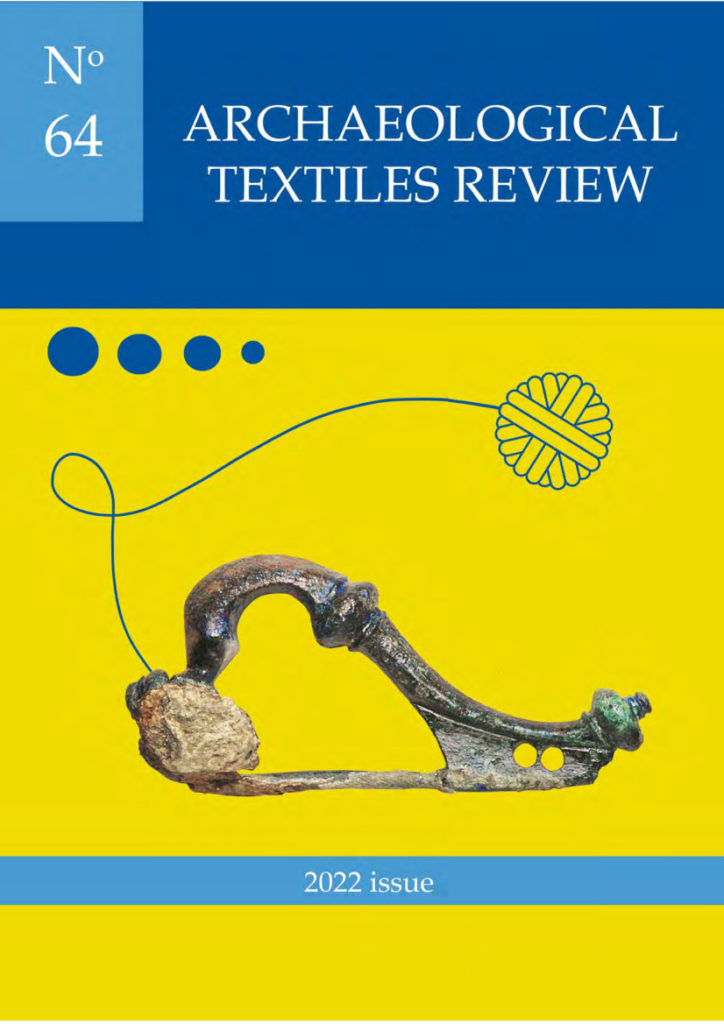The BAC Stitch Group hasn’t been posting, but that doesn’t mean we haven’t been researching and presenting. In May 2021 we shared our paper ‘Dogs, Deer, Bears, and Ghosts: The Hunting Scene on the Bacton Altar Cloth’ at the Medieval Dress and Textile Society Annual Conference. In May 2022 we returned to the same conference to present ‘Digital Reconstruction of the Embroidered Fabric that became the Bacton Altar Cloth’ and followed this presentation with a longer and more casual online talk about the same material. BAC Stitch members have given talks to a variety of interested groups, including gardeners, embroiderers, and members of the Bacton Parish church. And just last week we published our first short article, a project report in the journal Archaeological Textiles Review.
The Journal is published online and free to download, and our piece is on page 132 of issue 64. The first paragraphs are copied below, but go ahead, download and read the entire article!
Unpicking the Bacton Altar Cloth: innovative methodologies for interpreting embroidered textile artefacts
Challe Hudson, Cynthia Jackson, Natalie Bramwell-Booth, Christine Carnie, and Jennifer Worrall
For over a century, the embroidered textile known as the Bacton Altar Cloth (BAC) has been of interest to scholars, some of whom have speculated that it may have been created from an article of clothing worn by Queen Elizabeth I (Arnold 1988, 80; Lynn 2018). This rare survival presents an unusually broad variety of large botanical motifs worked directly on the silk and silver ground fabric by highly proficient professional embroiderers, as well as additional smaller motifs probably added later by skilled amateur embroiderers (fig. 1). Evidence of repeated cutting and piecing preserves an intricate record of the object’s history of reuse and repurposing. The mixture of uncommon needlework techniques, such as polychrome speckling stitch and needle blending, with familiar methods including stem stitch, chain stitch and woven wheels, give this embroidery the potential to contribute significantly to scholarship of Early Modern textile art.
At the beginning of 2021, the BAC Stitch Research Group formed organically from a series of collaborative online presentations and discussion sessions about the BAC hosted by the Medieval Dress and Textile Society (MEDATS). The group members came together from a variety of backgrounds out of a mutual desire to share findings and pool resources to produce a richer output of research through collaboration. The project progressed without set deadlines or timelines and has produced two conference papers, several workshops and blog posts. Work has begun on two articles for peer reviewed publication. The group’s mission is to use a collaborative blend of research approaches to learn about the BAC and to share findings with the textile history community; goals emerge flexibly and adaptively from investigation. Techniques include detailed examination of the artefact itself, including high resolution imaging and analysis; technical visual analysis; art historical interpretations of contextual sources including botanical illustrations, paintings, and comparable surviving textiles; digital reconstruction and digital mapping of the artefact; and experiential reconstruction.
Read the rest for free here, starting on page 132:
